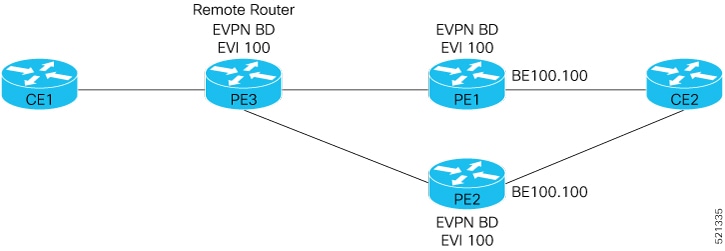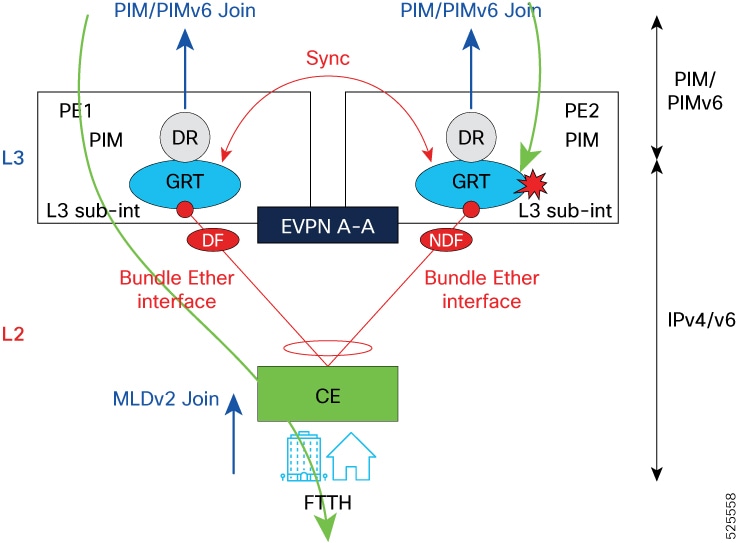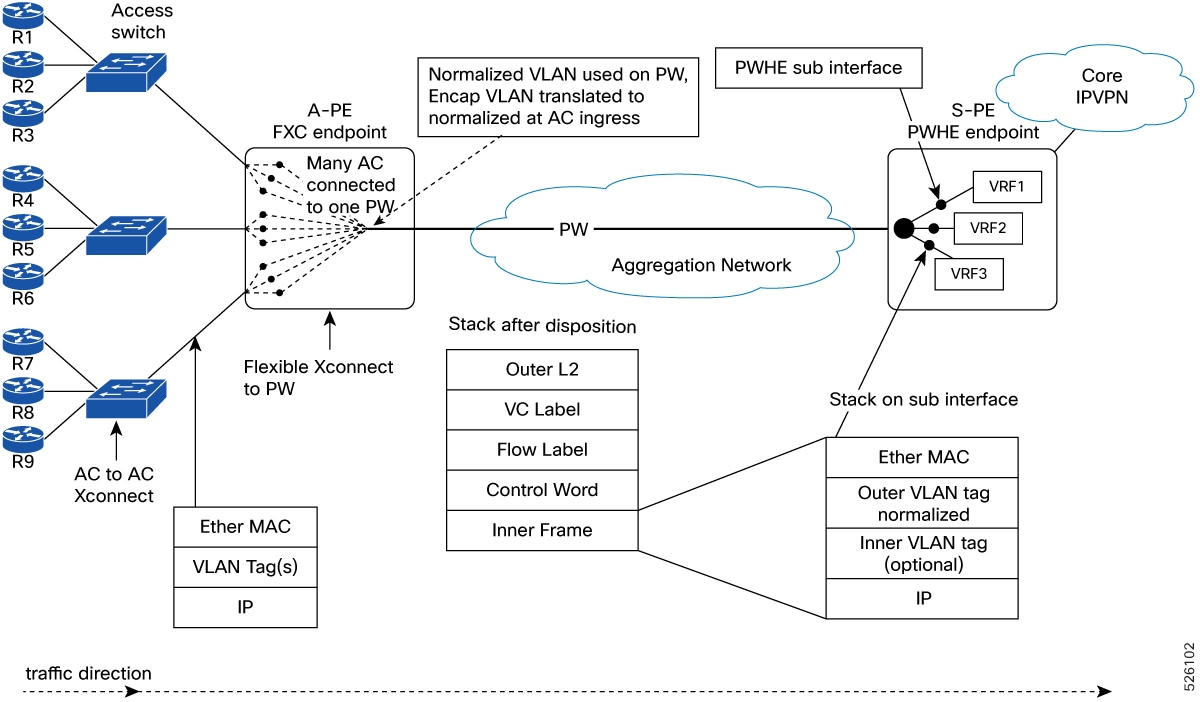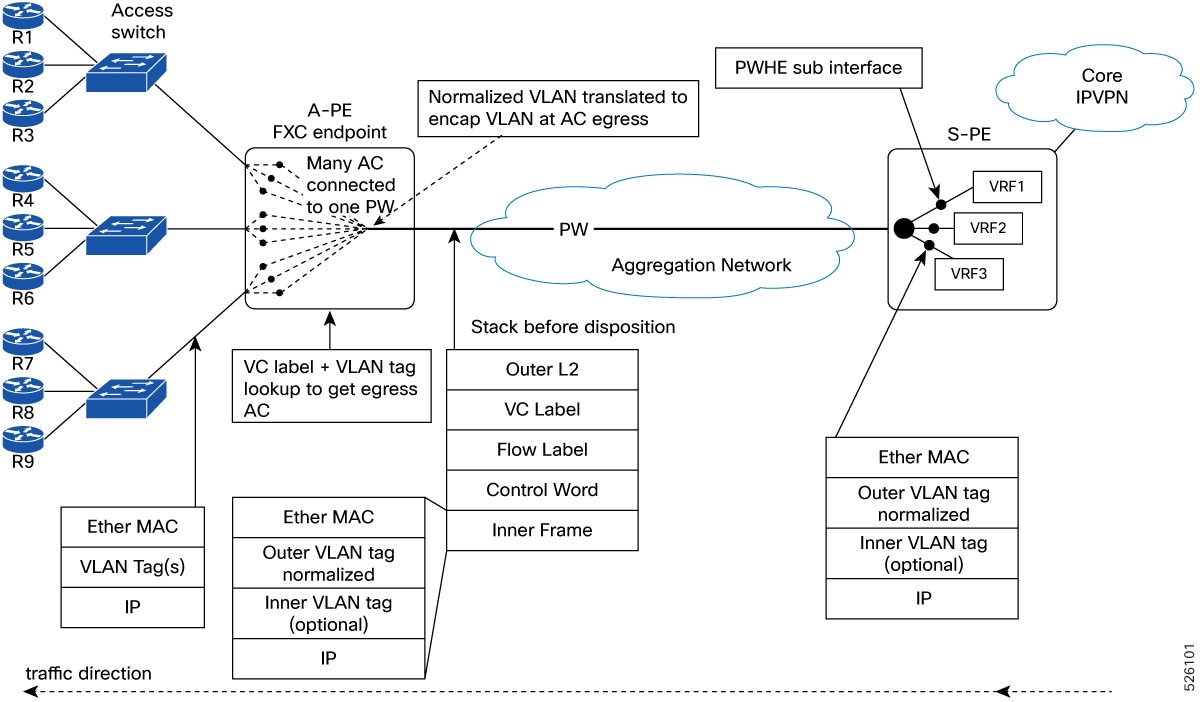EVPN multiple services per Ethernet segment
An Ethernet segment is a network infrastructure component that
-
supports multiple services on the same physical hardware resource
-
provides traffic segregation among these services, and
-
enables users to manage traffic configurations effectively.
|
Feature Name |
Release Information |
Feature Description |
|
EVPN Multiple Services per Ethernet Segment |
Release 25.1.1 |
Introduced in this release on: Fixed Systems (8010 [ASIC: A100]) (select variants only*) *This feature is now supported on the Cisco 8011-4G24Y4H-I routers. |
|
EVPN Multiple Services per Ethernet Segment |
Release 24.4.1 |
Introduced in this release on: Fixed Systems (8700 [ASIC: P100])(select variants only*) * The EVPN multiple services per Ethernet segment functionality is now extended to the Cisco 8712-MOD-M routers. |
|
EVPN Multiple Services per Ethernet Segment |
Release 24.3.1 |
Introduced in this release on: Fixed Systems (8200 [ASIC: P100], 8700 [ASIC: P100])(select variants only*); Modular Systems (8800 [LC ASIC: P100])(select variants only*) * The EVPN multiple services per Ethernet segment functionality is now extended to:
|
|
EVPN Multiple Services per Ethernet Segment |
Release 24.2.11 |
Introduced in this release on: Modular Systems (8800 [LC ASIC: Q200, P100]) (select variants only*) You can configure EVPN to run multiple services on a single Ethernet Segment (ES), which enables the efficient use of network resources. While the services run on the same physical hardware resource, each service can be associated with a different EVPN instance and separated from each other. This allows traffic segregation, which enables users to employ their own traffic management configurations. * This feature is supported only on routers with the Q200 and 88-LC1-36EH line cards. |
Highlights and benefits of EVPN multiple services per Ethernet segment
-
Enables consolidation of diverse services on a shared Ethernet Segment without compromising service isolation.
-
Supports independent traffic policies and configurations for each service, enhancing operational control.
-
Facilitates efficient use of physical infrastructure by allowing multiple services to coexist on the same hardware.
-
Improves network scalability and flexibility by reducing the need for separate physical segments.
-
Simplifies maintenance and upgrades by centralizing service management on a single Ethernet segment.
These capabilities help network operators optimize resource utilization while maintaining clear separation and control of service traffic, leading to streamlined operations and reduced costs.
Services supported on a single Ethernet bundle
You can configure multiple services on a single Ethernet bundle, with one service assigned to each sub-interface. The supported services include:
-
EVPN E-Line xconnect service
-
Native EVPN E-LAN service
These services are supported only on all-active multihoming mode.
Configure EVPN multiple services per Ethernet segment
Configure multiple EVPN services on bundle-Ethernet sub-interfaces to support diverse customer services over a single Ethernet segment.
Consider a CE device connected to two PE devices through bundle-Ethernet interface 22001. Configure multiple services on bundle Ethernet sub-interfaces.
Procedure
|
Step 1 |
Configure attachment circuits. Consider bundle-Ether22001 ES, and configure multiple services on sub-interface. Example: |
|
Step 2 |
Configure EVPN E-Line xconnect service. Example: |
|
Step 3 |
Configure native EVPN. Example: |
|
Step 4 |
Running configuration of EVPN multiple services per Ethernet segment. Example: |
|
Step 5 |
Use show l2vpn xconnect summary and show l2vpn xconnect group xg22001 xc-name evpn-vpws-mclag-22001 commands to verify if each of the services is configured on the sub-interface. Example: |








 Feedback
Feedback